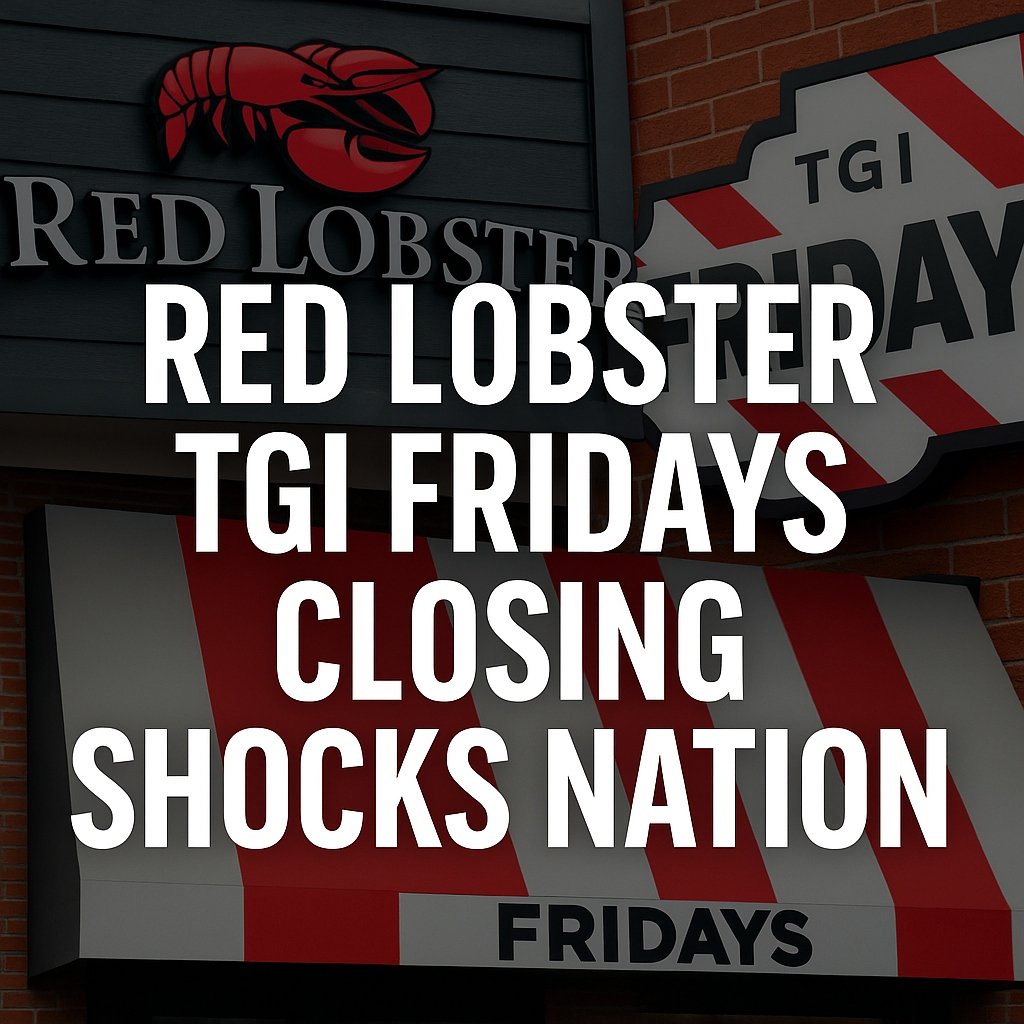“More than 200 restaurant locations. Gone.” That’s the reality behind the recent headlines about red lobster tgi fridays closing across the U.S. Once considered titans of casual dining, both chains are now shutting doors at a pace that’s raising eyebrows in the industry—and sparking concern among longtime customers.
But this isn’t just another round of store closures. It’s a wake-up call. These events reflect major shifts in consumer behavior, rising operational costs, and outdated business models. In this article, we’ll unpack what’s really happening, why it matters, and what these closures signal for the future of dining and retail strategy.
You Might Also Like: hoptraveler.com
The Backstory of Red Lobster and TGI Fridays
Red Lobster opened in 1968 and quickly became famous for bringing seafood to the masses. Lobster, shrimp, and those iconic Cheddar Bay Biscuits made it a go-to spot for seafood lovers across America. Over the years, it grew into one of the largest seafood chains in the world.
TGI Fridays, founded in 1965, brought a party-like vibe to casual dining. Known for its “Thank Goodness It’s Friday” motto, it served up burgers, cocktails, and a fun atmosphere that appealed to both young crowds and families alike.
Both brands became American staples—Red Lobster with its seafood feasts and TGI Fridays with its flair and upbeat energy.
Why Are Red Lobster and TGI Fridays Closing Locations?
The recent store closures aren’t random. A mix of internal issues and external pressures are forcing these restaurant giants to downsize. Here are the main reasons why they’re closing:
Financial Problems and Bankruptcy
This is one of the biggest reasons. Red Lobster officially filed for Chapter 11 bankruptcy protection in May 2024. This filing came after years of financial trouble, declining customer traffic, and high costs. As a result, more than 100 Red Lobster locations were closed to help the company reduce debt and stay afloat.
TGI Fridays is in a similar boat. In late 2024, the company filed for bankruptcy too, citing poor sales and rising operational expenses. It began shutting down underperforming stores to refocus on stronger locations.
High Costs and Low Profits
Running a full-service restaurant isn’t cheap. Rising food prices, wage increases, and higher rent costs have eaten into profits. During the pandemic, many restaurants took a hit, and while some bounced back with fast delivery models, chains like Red Lobster and TGI Fridays struggled to adapt quickly enough.
Shifting Consumer Preferences
People are changing how they eat. Fast-casual options like Chipotle and Panera have taken a big bite out of traditional sit-down restaurants. Many customers now prefer ordering food online or grabbing a quick bite without waiting for table service.
Younger diners especially are moving toward experiences that feel more personalized, unique, or health-conscious. That leaves chains like Red Lobster and TGI Fridays struggling to stand out.
Overexpansion and Poor Locations
In the past, both brands opened hundreds of locations. But not all of them were profitable. Some restaurants were placed in areas with too little foot traffic or high competition. When times got tough, these underperforming stores were the first to go.
Which Locations Have Closed So Far?
Red Lobster has already closed over 100 restaurants across various states, including California, Florida, Illinois, Arizona, and Pennsylvania. In some cases, customers showed up to find doors locked and signs removed overnight.
TGI Fridays followed a similar path. Several restaurants across New York, Texas, and New Jersey have been closed. These closures are part of a bigger plan to shut down locations that are losing money and reinvest in those that are still performing well.
How Are Customers Reacting?
For loyal customers, these closures come as a shock. Many people have fond memories of birthday dinners, family celebrations, or casual hangouts at these restaurants. Seeing their favorite spot close feels like the end of an era.
On social media, reactions are mixed. Some express sadness and nostalgia, while others say the quality had dropped in recent years. One user tweeted, “I loved Red Lobster as a kid, but the last few times I went, the food didn’t feel the same.”
What’s Next for Red Lobster and TGI Fridays?
These restaurants aren’t disappearing completely. Even though many stores are closing, both companies are working to recover and modernize.
Here’s what they’re focusing on now:
Leaner, Stronger Operations
Both chains are planning to keep only their best-performing locations open. This means fewer restaurants, but better service and possibly better food quality at the ones that remain.
Better Menu Options
To keep up with changing tastes, they are testing new menu items. Healthier meals, plant-based options, and more customizable choices are being added. Red Lobster is exploring more seafood bowls and combo deals, while TGI Fridays is revamping its appetizers and cocktails.
Improved Takeout and Delivery
They’re also investing in online ordering, faster takeout, and partnerships with delivery platforms. Red Lobster even introduced a digital loyalty program to reward regular customers.
Updating Restaurant Designs
Some locations will be remodeled to feel more modern, with fresher decor and technology upgrades like self-checkout kiosks and digital menus.
Industry-Wide Changes That Are Affecting These Chains
The closure of Red Lobster and TGI Fridays restaurants isn’t just about those two companies—it reflects a broader shift in the casual dining industry.
Here are a few key trends:
- Fewer full-service restaurants are surviving unless they offer something unique or local.
- Fast-casual and ghost kitchens are growing fast.
- Inflation and food costs are hitting margins hard.
- Staffing shortages make it harder to maintain quality service.
Chains that don’t evolve quickly may struggle to stay relevant.
What This Means for the Future of Dining Out
If your local Red Lobster or TGI Fridays has closed, you may notice more local or fast-casual options filling in the gaps. That’s not necessarily a bad thing—many diners appreciate having more variety and quicker service.
But it also means a shift in how we dine out. The era of chain restaurants dominating every suburb might be fading, giving way to new concepts that reflect today’s food culture.
Should You Be Worried If You Work There?
If you’re an employee, this news can feel uncertain. The closures have led to thousands of job losses, and more could come. However, many workers are being offered roles at other locations or given help finding new jobs.
Still, with the industry changing, workers may want to consider upgrading their skills, looking into newer restaurant formats, or even exploring careers outside of food service.
You Might Also Like: Blogsternation .com
Can These Chains Make a Comeback?
It’s possible. Other chains have struggled in the past and bounced back—like Domino’s and Olive Garden. Success depends on strong leadership, better food, and the ability to adapt.
Red Lobster and TGI Fridays still have brand recognition and loyal fans. If they modernize fast enough, they may find their place again in America’s dining scene.
Can Anything Reverse the Red Lobster TGI Fridays Closing Trend?
The phrase “red lobster tgi fridays closing” isn’t just a rumor—it’s a reality for many locations. But it doesn’t mean the end of these iconic brands. They’re slimming down, regrouping, and trying to meet today’s dining demands.
As customers, this might mean saying goodbye to a familiar spot. But it could also mean discovering a new favorite place or seeing these classics come back stronger in the future.
So whether you’re craving biscuits or a loaded appetizer platter, keep an eye on how your local restaurants evolve. The next time you dine out, you might just notice a smarter, fresher version of the restaurant you grew up with.

